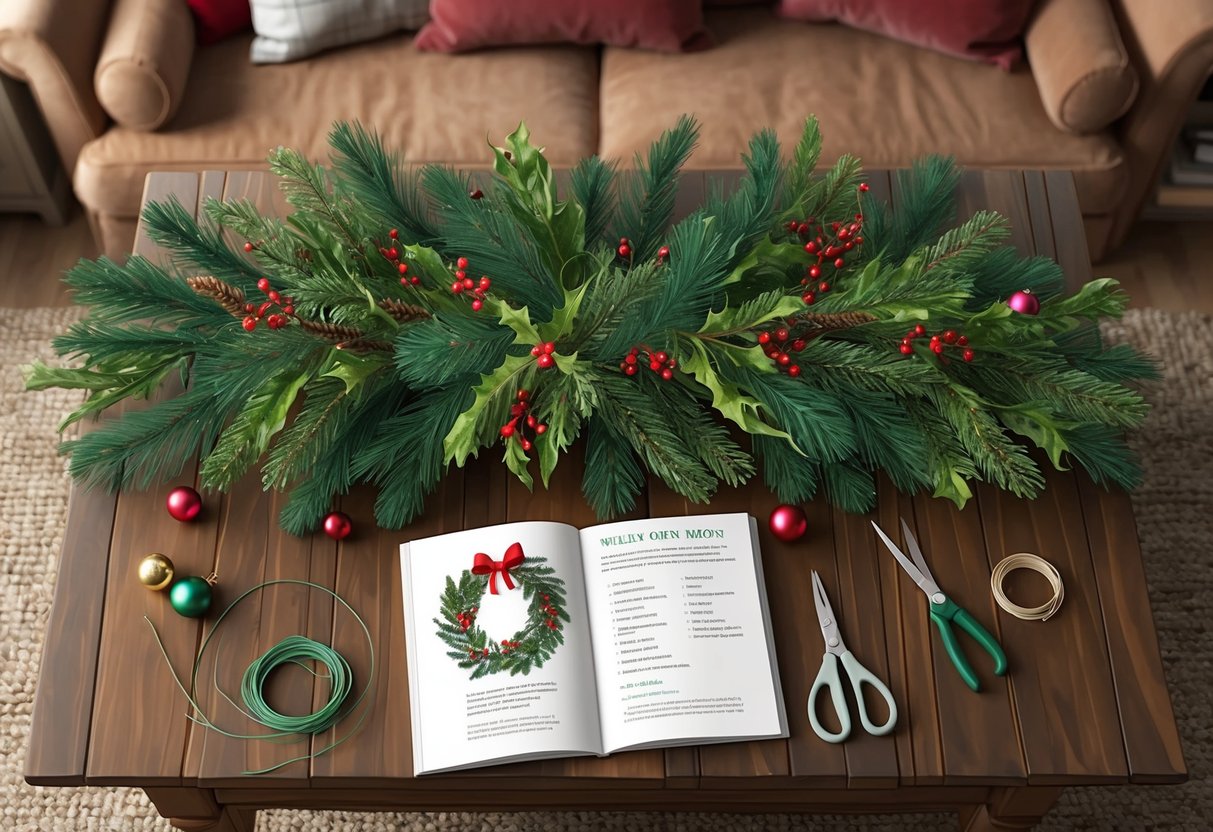
Nothing welcomes guests quite like a handmade holiday wreath displayed on the front door. Crafting a wreath allows anyone to bring a personal and festive touch to their home’s entrance, using unique materials and favorite seasonal greenery.
This guide offers clear, step-by-step instructions for creating a custom holiday wreath that complements any décor and makes a lasting impression.
Creating a wreath at home doesn’t require professional skills or expensive supplies. With the right tips and an assortment of greenery, flowers, or even foraged materials, anyone can build a fresh wreath as described in guides like this beginner-friendly wreath tutorial.
By choosing preferred styles and textures, each handmade wreath becomes a unique holiday accent for the front door. Step-by-step guides showcase how easy it can be to gather natural branches, secure them to a frame, and add decorative accents for a professional finish, as detailed in resources that teach how to make a wreath from foraged materials.
Readers will find practical tips for selecting the best greens, achieving the right fullness, and making the wreath last throughout the holiday season.
Essential Materials and Tools
Creating a handmade holiday wreath requires careful selection of a sturdy base, strong floral wire, sharp clippers, and fresh garland. Paying attention to the quality and compatibility of these materials helps ensure the wreath is both attractive and long-lasting.
Choosing a Wreath Base
A sturdy wreath base forms the foundation for any holiday wreath project. Common choices include wire frames, grapevine bases, and foam rings.
Wire wreath frames are especially popular because they offer support, flexibility, and easy attachment for greens and decorations. A 12-inch frame provides a balanced size for most front doors and is widely available at craft stores or online.
Grapevine bases add a rustic texture and blend naturally with greenery or dried florals. Foam rings are lightweight and work well for lightweight accents like artificial garland or silk flowers.
The shape and size of the base will influence the final appearance and durability of the wreath. Learn how to pick and use these bases in detailed guides such as those at Byther Farm.
Best Floral Wire Options
Floral wire secures greenery, ribbon, and decorations to the wreath base. Green floral wire is a preferred option because it blends in with foliage, making attachments less noticeable.
Florist wire typically comes in gauges ranging from 18 to 26, with 22 gauge being a good all-purpose option. Thicker wire (18–20 gauge) works well for heavier items like pine cones or ornaments, while thinner wire (24–26 gauge) is ideal for delicate additions.
Pre-cut wire pieces make the fastening process more efficient, while spool wire offers flexibility for custom lengths. Some prefer to use green floral tape along with wire for extra hold on slippery stems.
Details on choosing and handling floral wire are available in step-by-step guides.
Selecting Clippers and Scissors
Sharp clippers and scissors are necessary for cutting branches, garlands, and ribbon. Bypass pruners handle thick, woody stems without crushing plant tissues, maintaining clean cuts that help greenery last longer.
Regular household scissors usually suffice for trimming wire or ribbon but might struggle with heavy stems. Look for clippers with a comfortable, non-slip grip that fits well in the hand to reduce fatigue during longer wreath-making sessions.
Keep tools clean and sharpened to prevent fraying or uneven cuts. Investing in dedicated floral snips or heavy-duty garden shears can make the process smoother and more precise when working with various types of natural and artificial materials.
Finding Quality Garlands
Garland serves as the main decorative and structural element in a wreath. Fresh options like balsam fir, pine, cedar, and holly branches remain popular due to their fragrance and traditional appearance.
When selecting garland, look for pliable stems, vibrant color, and minimal shedding. Fresh materials not only look better but last longer on the door.
Artificial garlands come in a variety of textures and colors, offering longevity and minimal maintenance. Mixing real and faux elements can give a wreath depth and durability.
For those with access to outdoor greenery, foraging from the garden helps add personal and seasonal flair. Guides like this one provide examples of garland combinations that work well for holiday decor.
Step-by-Step Guide to Assembling Your Wreath
A successful holiday wreath assembly begins with careful preparation, followed by the thoughtful arrangement of fresh or artificial greenery. Using the right tools and methods for attaching and securing materials ensures the wreath remains attractive and durable throughout the season.
Preparing the Work Area
Start by choosing a flat, roomy workspace with plenty of natural or bright artificial light. Place a protective covering, like an old tablecloth or newspaper, over the surface to catch loose leaves, needles, or stray pieces of floral wire.
Gather all materials ahead of time. Make sure you have your wreath base, scissors or pruners, wire cutters, spools of floral wire, and any decorative items like berries, ribbons, or pine cones.
Sorting materials before starting can speed up the process and minimize disruptions. Lay out greenery and decorative elements so they are easy to reach.
This organization not only saves time but prevents accidental damage to fragile items during assembly. A tidy work area reduces clutter, keeping the assembly process efficient and enjoyable.



